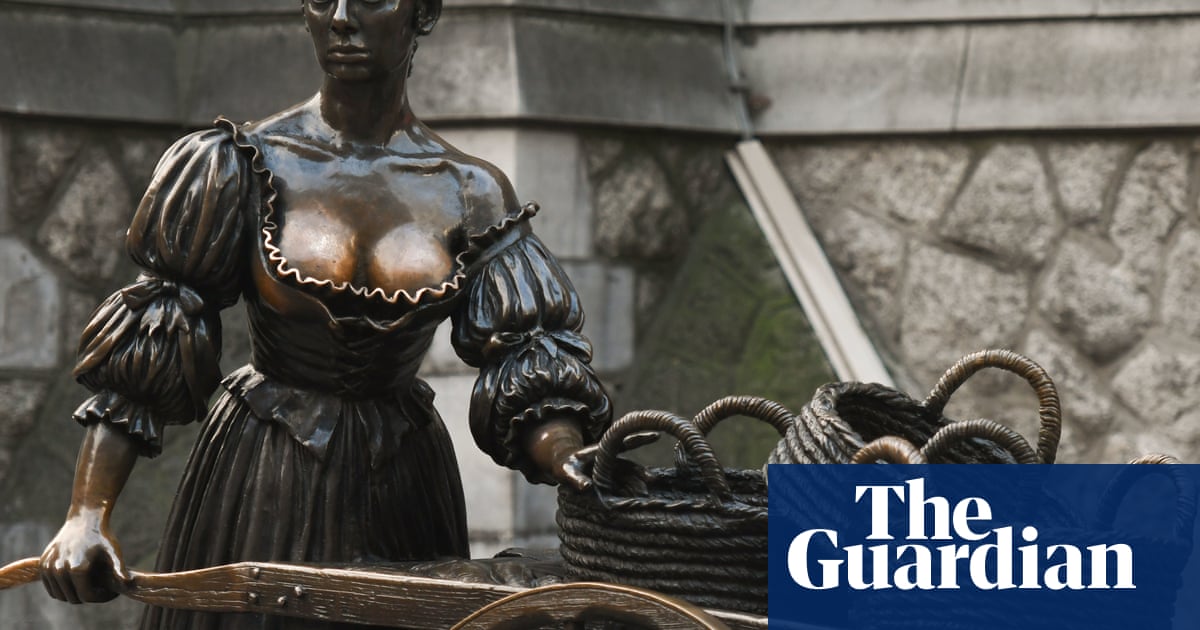Each time a tourist sidled up to the statue and reached for the most famous cleavage in Dublin, a voice called out: “No touching please.”
Two city council stewards stood vigil over the landmark on Tuesday to notify would-be gropers that Molly Malone was to be left alone. After years of supposedly bringing good luck to whomever touched the breasts, they were now off-limits.
To reduce damage to the statue, and to protect the dignity of a Dublin symbol, city authorities have posted the stewards in a week-long pilot project while they ponder other ways to shield the bronze figure from tactile appreciation.
“I was here a few days ago and got to touch them then,” said Anders Oustid, 42, from Norway. “I don’t think they should stop people. It’s a fun gimmick that you can come here and touch the boobs. It’s good luck and apparently means that you’ll get to come back to Dublin.”
Mars Masana, 33, from Barcelona, had also touched the cleavage on a previous visit to the statue on Suffolk Street and was hesitant about the prohibition. “I suppose in Spain we would feel the same if people were touching such a statue all the time.”
Molly Malone – by many accounts a fictional 18th-century fishmonger’s wife – is the subject of a ballad, known as “cockles and mussels”, that is an unofficial anthem forIreland, sung at wedding, parties and sporting fixtures.
The sculpture, by the artist Jeanne Rynhart, was first erected in 1988 and promptly labelled“the tart with the cart”in reference to the cleavage and rumours that Molly sold more than fish.
A creative tour guide is credited, or blamed, with inventing the story that touching her breasts would bring luck and a return trip to Ireland’s capital. The result is discoloration where countless hands have passed – and indignation by some who consider it disrespectful. They include Tilly Cripwell, a music activist who last year launched a Leave Molly Alone campaign.
Elaja Declercq, 17, from Belgium, obeyed, but regretted, the injunction to not touch. “I understand some think it’s inappropriate but it’s a tradition.” Her two friends – Erasmus students who had come to film themselves singing the ballad – agreed.
Ray Yeates, the city council’s arts officer, said authorities were considering options, including leaving the statue in place and simply repairing the damage as needed, or erecting a fence, or moving it, perhaps indoors. The stewards’ interactions with people this week will inform the final decision.
Yeates told the BBC that while a “worldwide phenomenon that statues are touched or rubbed” has become a custom, some people had noted that it mimicked undesirable behaviour. “It would be illegal in public, so why would we mimic it?”
Naomi Smith, 70, from Australia, was struck by the statue’s revealing attire. “It makes me cold just to look at her. She would have been awfully cold going around like this.”
